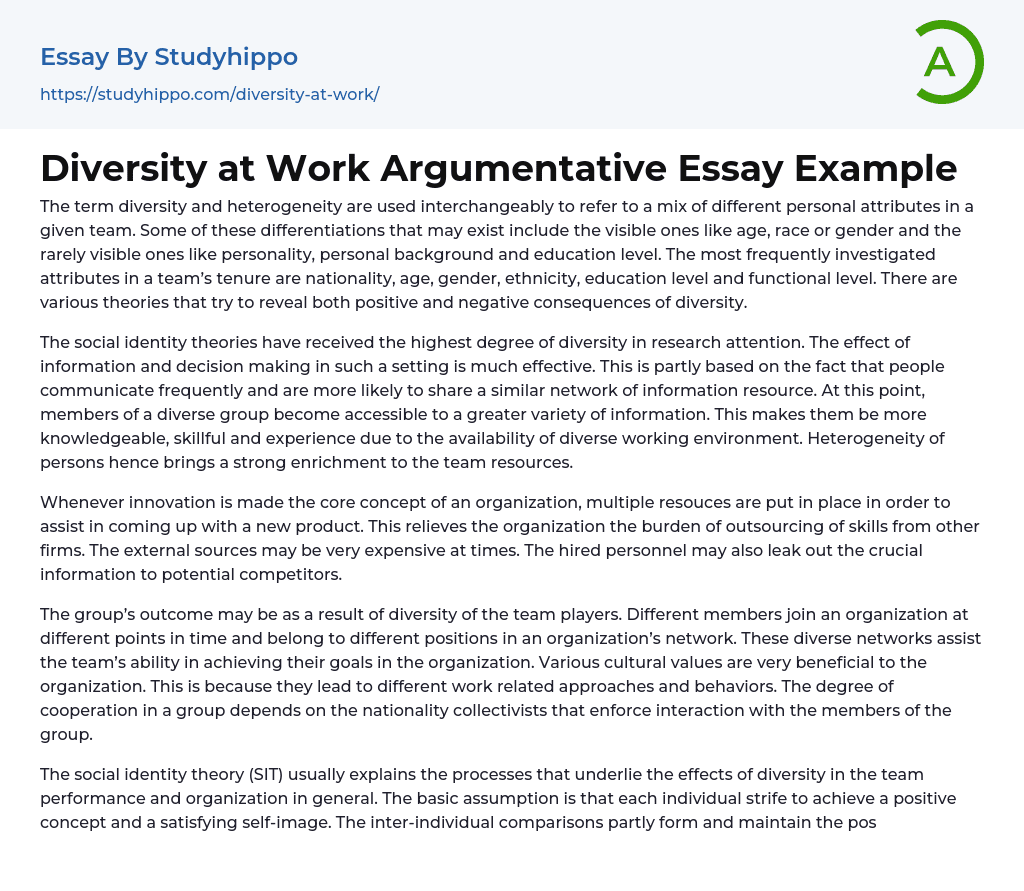Both diversity and heterogeneity, which have the same meaning, pertain to the combination of different personal qualities within a team. These qualities encompass visible attributes like age, race, and gender as well as less obvious ones such as personality, personal background, and education level. The team typically examines common characteristics including nationality, age, gender, ethnicity, education level, and functional level. Various theories delve into the positive and negative effects of diversity.
Extensive research has been conducted on social identity theories, which focus on the impact of information and decision-making on diverse groups. The communication and sharing of information within these groups are essential as they allow individuals to access a wider range of resources. This diversity leads to increased knowledge, skills, and experiences due to the availability of various perspectives.
In turn, having team members with different backgrounds enhances the overall reso
...urces of the team, which is particularly advantageous for organizations prioritizing innovation. By having multiple resources within an organization, there is less reliance on costly and risky external sources that could potentially leak information to competitors.
Success often stems from teams' diversity in terms of their entry times and positions within the organization's network. These diverse networks create an environment where teams can effectively achieve their goals. Additionally, cultural values within an organization contribute to different approaches and behaviors towards work — something highly valuable.
The level of cooperation within a group depends on collectivist individuals from different nationalities who enforce interaction with other group members. According to the social identity theory (SIT), diversity has an impact on team performance and overall organizational success.According to SIT, individuals compare themselves to others in order to maintain a positive self-image
impacting group outcomes. However, diversity can hinder team performance, particularly with multiple generations. While different age groups bring unique values, communication and idea exchange are affected. Age strongly influences the social identity of a group and task type also affects performance. Tasks requiring physical strength are better suited for younger members. These age and task differences can cause communication issues and impede idea exchange within teams. Therefore, establishing the right balance of diversity is crucial to avoid any potential negative consequences that may arise from it.
- Social Construction of Gender essays
- Profession essays
- Labour Economics essays
- Occupational Safety And Health essays
- Pension essays
- Salary essays
- Strike Action essays
- Wage essays
- Career essays
- Workplace essays
- Homeless essays
- Working Together essays
- Career Path essays
- Hunter essays
- Farmer essays
- Nurse essays
- Pilot essays
- Professionalism essays
- Doctor essays
- Discipline essays
- Police Officer essays
- Labor essays
- Social Work essays
- Model essays
- Architect essays
- Engineer essays
- Administration essays
- Stakeholders essays
- Teamwork essays
- Caregiver essays
- Public Administration essays
- Raising Minimum Wage essays
- Interview essays
- Job Interview essays
- Career Choice essays
- Career Goals essays
- Portfolio essays
- Community Service essays
- Work-Life Balance essays
- Performance Appraisal essays
- Job essays
- Employee essays
- Skills essays
- Service essays
- Vocation essays
- Internship essays
- Work Experience essays
- Duty essays
- Dream Job essays
- Career Plan essays




